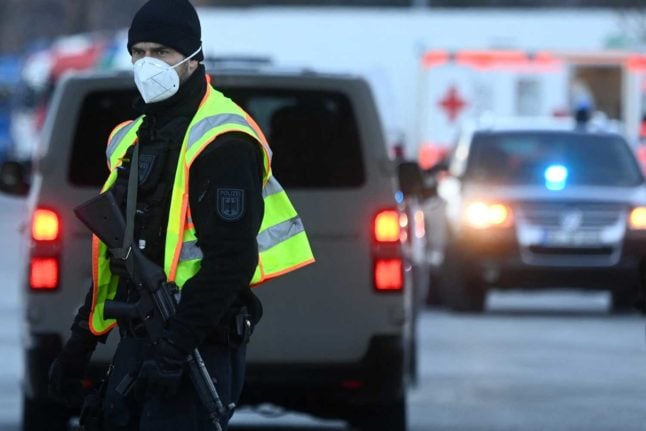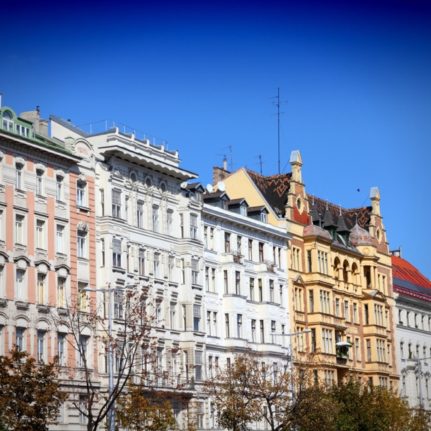Parts of Tyrol have been completely cut off from the outside world and locked down.
A village in Carinthia has a seven day incidence of almost 1,000. Meanwhile, in Vorarlberg, restaurants have opened and indoor events are allowed again.
What is the national situation?
Austria has opened its shops with distance rules and hairdressers, beauticians and tattoo parlours with a test requirement.
People must keep two metres apart in public places unless they live in the same household.
In public, inside rooms, an FFP2 mask must also be worn, including on public transport and in cultural institutions such as museums, art halls, libraries and zoos, which are also open.
Exit restrictions apply from 8pm to 6am. Outside this time a maximum of two households may meet with at most four adults and six children who must be supervised.
Schools and kindergartens are open with testing and mask requirements.
Coronavirus hot spots
However, in some areas of Austria where there has been a rapid increase in coronavirus cases, further lockdown measures have been taken. As a rule of thumb, once the seven-day-incidence rises above 400 people per 100,000 inhabitants for one week, this should trigger further restrictions.
Tyrol, which is experiencing an outbreak of the South African variant of the coronavirus, is also subject to special restrictions, including when travelling to Bavaria in Germany.
So which areas of Austria are seeing a fall in cases, and which regions are seeing an increase which puts them in the danger zone?
Carinthia
Hermagor in Carinthia is currently locked down, and people are only allowed to leave the district with a recent negative coronavirus test. A 24-hour stay at home order is also imposed. Since lockdown measures were imposed the 7-day incidence has dropped from 700 to 266 (as of Wednesday). The seven day incidence will have to drop below 200 for the district to reopen, Health Minister Rudolf Anschober has said.
The village of Zlan in the municipality of Stockenboi is to be cordoned off from Sunday onwards. Leaving will only possible with a negative test. The village has around 400 inhabitants and a seven-day incidence of almost 1,000.
Lower Austria
Exit controls requiring a recent negative coronavirus test have been in place in the city of Wiener Neustadt since last week. The seven day incidence was at 515 in this area on Thursday.
However the districts of Neunkirchen (452.8) and Wiener Neustadt-Land (449.5) are not yet considered a high incidence area according to Health Minister Rudolf Anschober’s ordinance, as the high numbers have not been in place for seven days.
Salzburg
In St Johann im Pongau in Salzburg you need a recent negative coronavirus test to leave the municipalities of Bad Hofgastein, Dorfgastein and Bad Gastein. In Tamsweg in Salzburg, a test requirement to leave is in place until 24th March.
Tyrol
In Tyrol you need a recent negative PCR or antigen coronavirus test to use cable cars to go skiing. Extra tests and mask requirements are in place for old people and nursing homes. The Tivoli and Greifmarkt markets have been suspended in Innsbruck until 27th March.
There are test requirements in place if you want to leave the Haiming and Roppen municipalities and Arzl im Pitztal municipality in Imst. The same applies to the municipalities of Matrei in East Tyrol and Virgen
Since 27th February, people have been required to wear an FFP2 mask outdoors in certain public places in the municipalities of Jenbach, Mayrhofen and Schwaz.
There are also border restrictions in place for people travelling between Tyrol in Austria and Bavaria in Germany. However, Austria’s Chancellor Sebastian Kurz said on Thursday he believed German border controls to Tyrol could end within two weeks, according to the APA agency.
Tyrol was a European hotspot for the South African variant of the coronavirus, but received extra Biontech-Pfizer vaccines from the EU to vaccinate people living in the Schwaz area. The number of active cases of the South African variant has since been reduced from 200 to 60.
Vienna
On 19th March stricter measures involving more testing and stricter quarantine rules were brought in for schools, kindergartens and after-school care groups.
Around 159 teachers and kindergarten teachers fell ill with Covid-19 in Vienna last week, according to ORF Vienna, and the seven-day incidence is highest in the latest AGES figures among 5 to 14-year-olds. The city’s seven day incidence is one of the highest of the federal states in Austria, standing at 276.
Vorarlberg
Vorarlberg, which has one of the lowest seven day incidences in Austria (59.4) has opened up its restaurants and pubs for people with a recent negative coronavirus tests.
Distance and mask requirements are in place. A maximum of four adults from two households plus a maximum of six minor children may be seated at each table.
Events for up to 100 people can take place indoors and outdoors with testing and mask requirements in place along with other safety measures.
Sports for children and teenagers up to 18 years can take place inside with testing. Outdoors, 20 people up to the age of 18 and three trainers are permitted to train together.



 Please whitelist us to continue reading.
Please whitelist us to continue reading.
Member comments